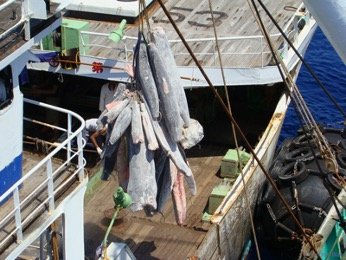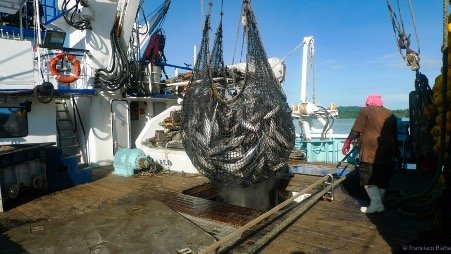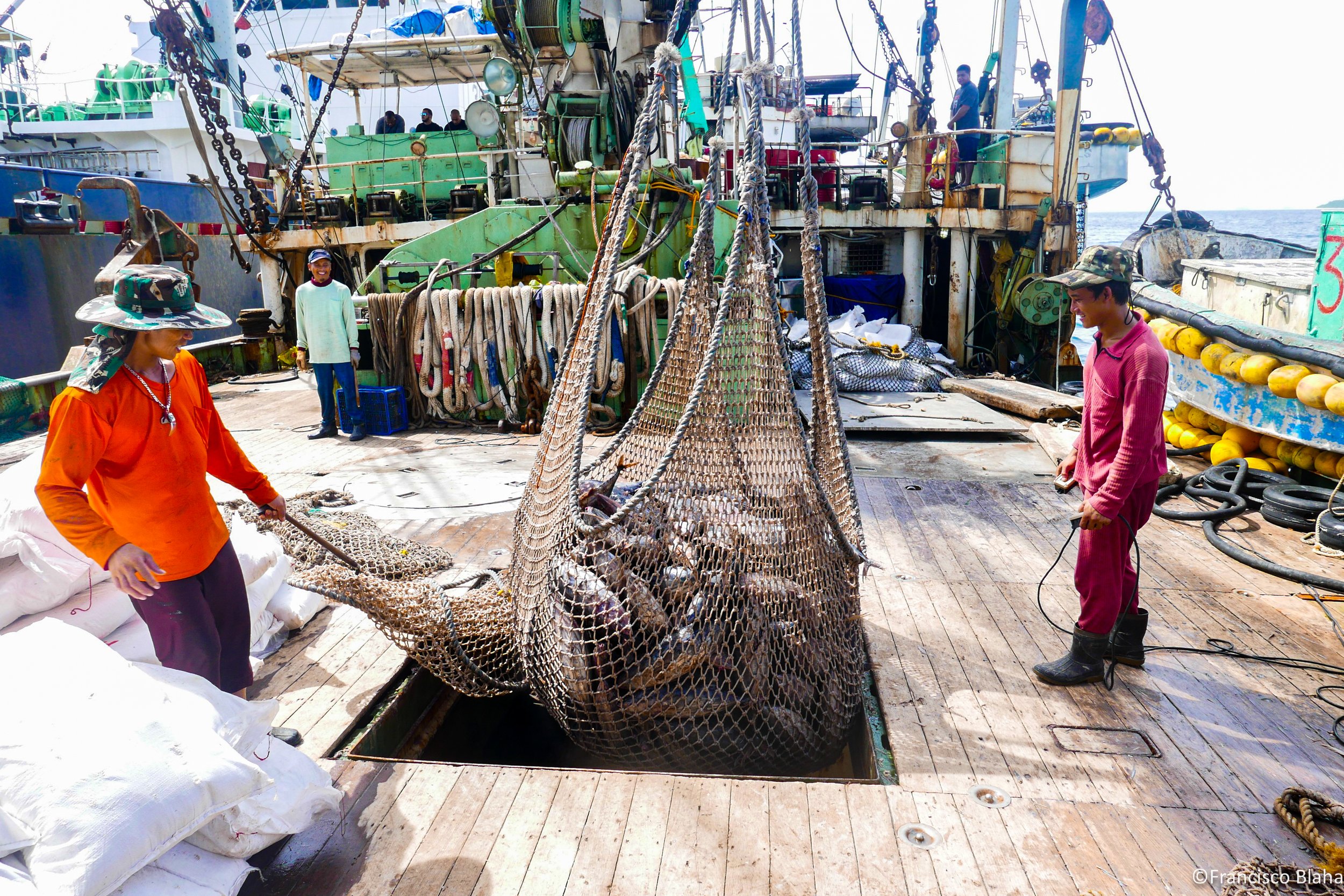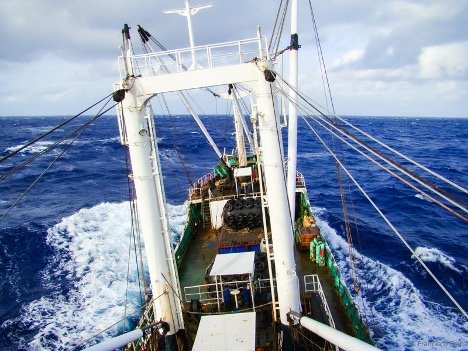Following the advancement of technologies and platforms using AIS in the last few years (and events like the Sun Flower 7), many discussions have arisen around classifying the contact between two vessels at sea as a transhipment. Most of the present classifications are based on the time that both vessels are alongside each other and, in some cases, if these vessels are a fish carrier and an FV.
So I have been dwelling on writing something of help about it. I originally wanted to make an information-type paper of sorts, yet it is challenging to articulate it in a traditional paper structure as there is no thesis to prove, and the overlapping nature of the factors at sea cannot be easily categorised into a risk-based matrix, as (at least in my tiny brain) there is not a fully defined rank of priorities that can be mathematically defined as to be in an algorithm.
From my experience at sea, it is never just one fact, many others relate to many operational aspects, such as weather, design of vessels, sizes of hatches, type of gear, logistics of salt in PS or bait in LL and so on. Hence the probabilities of transhipment between two vessels going alongside respond to a matrix of possibilities and cannot be defined by any single event.
As an overall approach, I will discuss the variables identified over separate “thematic” areas… yet with the caveat that there are overlapping between them, and in no way or form do I claim this is a definitive list.
To start, let us agree that transhipment is defined by the FAO TS guidelines (which I was proud to be part of) “Transshipment” means the direct transfer of any quantity of fish onboard from one vessel to another vessel regardless of the location of the event, without the fish being recorded as landed;
Reasons for vessels to get together?
To be honest… pretty much everything, my personally weirdest situation was to deliver to a fellow skipper the ashes of his dad (a hardcore anarchist) that wanted his remains to be dispersed on the high seas and in no one’s territory… so… basically you can think it, chances are, it can happen.
Transferring of “consumables” is a massive reason why carriers get together with FV, but also Carrier to Carrier may get alongside. Based on a study I did in 2021 for the FFA membership, a conservative annual estimate of 15,000,000 bait cartons are used by the Long Line fleet (approximately 2000 vessels), and around 2,800,000 bags of salt (which is over 140000 tons) are used by the PS fleet to prepare the freezing brine, and most of this is delivered by carriers to FV.
Furthermore, add to these monstrous numbers, above a substantial amount of parts, fishing gear, FADs supplies, oil, food and crew are moved in between vessels.
Why not get them to port, you may rightfully ask… well… port infrastructure in the Pacific is limited and expensive (just on salt would be around 7000 containers a year). Furthermore, all these goods would have to enter a “bonded port warehouse/area” not to pay import duties since they are not really imported into a country since they will be used elsewhere, and all that requires space, complexity, capacity, money, people, control systems… and all that is hard to develop in the region.
Crew wise is not just due to people being considered “goods” but because the reality that it is virtually impossible to get transit visas via Australia, NZ and USA (the 3 main airline hubs feeding the Pacific, yet at the same time the champions of crew rights) if you are poor -i.e. no credit card- and from SE Asia or Africa.
Finally, while possible, in my experience, in over 90% of FV to FV encounters, there is not fish transhipment… but goods, crew, parts, net panels, lubricants, chemicals and sometimes salt or bait. In very good weather, with low fish catch rates, and between vessels whose masters are from the same region (even if their vessels are flagged to different countries), getting alongside can also be social.
This is not to be confused with “net to hatch” operations in PS… as it tends to be regulated, it usually includes the presence of observers in both vessels and is not part of what we define as transhipment.
So getting at sea for transhipment is just one of at least 5/6 reasons vessels get alongside… yet of course, the more stuff you exchange, including fish, the more time you need together, as generally, bait, parts, salt, food, etc. are not stored at the same place than fish, so they need to be moved from wherever they are to the area of crane access, also very rarely fish go one way, and goods the other as the logistics of bringing fish to the deck of the FV and getting it into the holds of the carrier are very different to those of getting goods from the carrier and sending them to the FV.
Where will they meet?
That is mostly a function of the type of vessels and the jurisdictions in which they fish. In the WCPO, PS will meet with carriers and other FV for goods transfers and not for transhipment at sea, as there forbid, furthermore, there is back 100% observer coverage… also PS transhipments take a long time (as we will discuss later), will focus mainly on LL.
In the case of LL, the situation is different due to the impracticability exemption of the WCPFC CMM 2009-06, which requires WCPFC Members to make vessel-specific determinations as to impracticability and submit a plan detailing the steps being taken to encourage transhipment in port (which has not happened yet). Unfortunately, transhipment on the high seas has become the norm for some fleets rather than the exception. Over 50% of the almost 3000 longline vessels in the region are registered to tranship on the high seas.
Most high seas transhipments in the WCPO occur outside the Pacific coastal countries' exclusive economic zones (EEZs). The fleet managers of the Longliners pre-arrange rendezvous points with the carriers' managers, and meetings take place in these pre-arranged locations based on where most of the LL is at expected times, and the carrier's schedule also depends on the weather.
Yet some of these rendezvous points seem to be very stable over time, for example, the Seishin a Korean carrier very active in the WCPO LL transhipment scene, meets on successive trips FS vessels in the HS pocket out of FSM at very similar positions in the equatorial calms 0.35 S/160.00S
the Seishin trips this year January to March and then again April to May 2023, always outside EEZ or in HS pockets
The logistics of getting vessels alongside at sea.
Rule #1: Skippers may be the boss on board, but the weather is the king at sea.
Getting vessels alongside is not something that any skipper does just for fun, it is already complicated when the weather is fine, and it gets exponentially worse when the weather gets rougher.
Skippers need to be aware of the right approach angle between the manoeuvring fishing vessel and the carrier’s constant heading, then the speed of approach in the function of wind and sea conditions, then the swinging of both carrier and FV, since the FV failing to appreciate the swing can cause serious damage, particularly after their bring down engine power, among other many other issues.
I described the overall process in the carrier's inspection guide is did for TMT, but basically, we have:
Alongside (ropes tied) – the fishing vessel comes alongside the carrier vessel. The carrier lowers large (Yokoyama) fenders are lowered from the carrier vessel before FV comes towards the carrier vessel, generally from the rewards side, now most carrier masters (and depending on the design) secure arriving vessels of the port side of the carrier, but sometimes it may be on starboard, but as said in most cases leeward side. Ropes are secured at the bow first and then at the stern (if there is a problem, the carrier master faces a bit of the wind, and the stern will come alongside by itself).
Depending on the weather and the size difference in between the freeboards of both vessels, this manoeuvre can take up to 30 minutes. Note from here is when things start to vary, the more we move towards transhipment, the more deck arrangements, cranes set up and manning, hatches openings, nets in between the vessels, pallets, chutes, etc need to be made, and the longer it takes.
It is important to understand the operational range of a carrier crane (is always the carrier crane doing the transfers) needs t align with the very reduced open area of the Longliner, they can’t load and unload from any part… it is most of the time an arad of 6 to mt long and 4 to 6 wide only.
Again, depending on the weather, this can take another 30-40 minutes to set up everything (cranes, nets in between the vessels, pallets, chutes, etc. Hence in best-case scenarios, it may take 40 to 60 minutes from the time both vessels get in rope throwing distance from each other.
Movement of fish and goods in between vessels
Things move in between vessels in cargo nets and/or “strings” in the case of LL. In LL most frozen fish fish has a closed loop of monofilament drilled through their carcass (generally at the caudal end) to help with their movements and transfer, most likely added when the fish were hauled onboard the longliner. When moving the fish in “strings” a closed circle of thick rope is passed through the monofilament loops to cluster the fish together. Then ends of the looped rope go in the hook at the end of the carrier's winch/boom cable and that way they pass over (see pictures below)
Most transhipping longliners (Asian fleet) longliners have a very similar same deck configuration, so is not really possible to do two things at once (receiving goods and sending over fish). They have small hatches, one or two on deck, one more central, and two equally sized hatches towards the stern and bow end of the deck, and these may be horizontal ones on dry lockers.
Fish is tied up to the hook of the carrier winch and passed over to the carrier either in strings or cargo nets…. The bottleneck for speed is how much fish cons come at once through the hatches (as you can see in the picture above on the left), and not the size of the nets.
While the fish is being transferred, the crew manually or using a small winch/pulleys system moves the fish from holds and lockers to the deck to then get into nets and or stings… this is the process that defines the speed of transhipment.
Also, there is the loading strategy of the master... initially, you want to keep species separated to facilitate transhipping, but you also need to consider the boat stability and fishing rates per species of the trip before; sometimes is all YF and so on.
Some of the rates of ALB TS are faster than other species, this is because it tends to be a much more target-specific fishery. Therefore, you have much albacore being stored next to each other, which makes the process easier.. .vessels targeting albacore in the South are quite more homogenous in the catch rates over the tropical ones.
Then when vessels get alongside, you may only have a contract to unload Albacore, for example, and have to crawl to the guts of the freezer and sort them out, 1 by 1, other times, you retain YF and BET and send by-catch away... again 1 by 1.
Furthermore, you may be receiving supplies and bait as well, and that needs to go where fish is not coming out, so it gets quite logistic sometimes.
Crew rest
Carriers are commercial vessels under ILO and IMO rulings, unlike fishing vessels, the crew on board are seafarers and not fishers, and their working conditions are more controlled, including food breaks and crew rest. And while there is variability, these are mostly respected.
Transhipment rates?
This depends on many factors, but fundamentally how much fish is transferred and what method is used (nets or strings). A reasonable estimate is around 10 tons an hr for nets in LL and around 7-8 for strings. This is measured from the time of the first transfer until the last.
Any time calculation must include stoppages for rain, weather, rest and movement of fish between hatches and cargo transfer occasionally. My friend Deidre Brogan reports total transhipment times in between 10 and 53 hours. But none below 10 hrs is something I will agree to.
It can be possible that they may get together for a while to do some transhipment and or goods transfer, and then separate because of weather or to re-arrange loads and then get back alongside … so times can be added over events, yet the time to get alongside will have to be accounted every time.
For Purse Seiners is totally different, the size of the hatches on the deck is the limiting factor in terms of the speed of unloading. This is due to the volumes of fish that fit in a net that comes from the well through the hatch onto the deck.
As it can be seen in the pictures below:
Is not possible to have a full exact rule of the volumes coming out at once, yet older vessels with up to 1000-ton carrying capacities, such as those of Taiwanese and Japanese origin, have nets with 700 to 800kg being brought at once. Newer American, Korean and USA-made vessels cap at around 1200-1 700 kg while the bigger European vessels cap lift up to 2 500 kg at once.
You could be doing, in the best-case scenario 10 to 15 transfers per hr, so depending on the type of vessel, we have 9 to 25-30 ton/hr
Weather/ Sea conditions
Having two vessels alongside, mainly when there is a big size difference between them, is an intrinsically risky situation.
Once vessels are alongside, even small changes in sea conditions can change the heaving, swaying and surging of the smaller vessel, which may lead to the separation of vessels until conditions get better.
Separating / Off siding
Separating is a fast manoeuvre as you let the weather play in your favour, and ropes are let go more easily than when getting alongside. It can take 5-10’
When is it worth doing a TS?
One thing that is not usually part of the discussion is what will be gained from a TS? At sea is all about money, and volumes are accounted for since money is always involved, so you, as a LL are going to get with another vessel for transferring 10 mt? what is the point of that, you would have spent more in fuel to get to the rendezvous point than the advantage gained for the TS.
Of course, high-value fish, like bluefin tuna, will skew the reasons… you could pass a few tons of deep-frozen BF (-35 to -60C) to a carrier with the capacity to maintain such temperatures (not many around)… nevertheless, the whole logistics of the manoeuvring and travel time still apply.
Conclusion
It is complicated… it depends… and all those answers we hate (but are a reality in fisheries)
All that I wrote here is to show that there are no simple answers to complicated questions. It is not linear. Not to say that: How long do two vessels need to be together at sea to be considered a TS? It is a totally valid question I tried to answer.
So again, considering all the caveats on everything I wrote, the generalised assumption that there is a potential for transhipment off longliners for encounters in between of less than 4 -5 hrs is one that I find difficult to digest.
Remember that it takes up to 1 hr for vessels to get alongside and prepare everything for TS, and then at best, do 10 tons/hr for a LL vessel that can carry 200 to 500 tons. Even for 4 hrs of transhipment, we are talking 30 tons at best… and as said is not always possible to do fish one way, bait and parts the other,
So, for Longline, I will go to almost nil probability around less than 4 hrs, low for 4 to 6. Medium 6 to 9 and high above 9 hrs
For Purse Seiners, I will suspect a TS only after 24 hrs aside, and reminding that this could take various in and outs of the vessels over a few days.
So… not sure if it helps anyone, but if it at least makes you realise that it is not linear, I’m happy with that. Of course, if you suspect a potential transhipment… then nothing beats boarding once the vessel gets to port and finding evidence.











